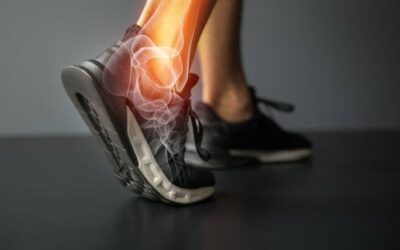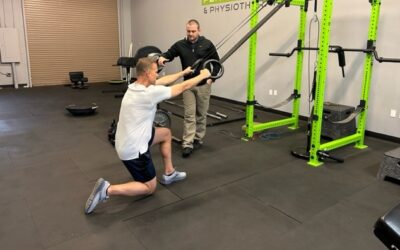Do you feel your mid or low back tightening up after completing the front nine?
It makes it tough to ask your golf buddy to take your golf ball out of the hole because you don’t want to bend over. I would be willing to bet that is not exactly the impression you are going for when you’re on an outing with a potential business partner or a group of friends.
And, my guess is also that it does not subside as soon as you step off the course and into your vehicle. I am sure you have noticed your low back pain lingers days after shooting a round or two. Maybe to the point where it is difficult to bend over even just to tie your shoes.
Root Cause
Most people get fixated on the fact that the pain is in the low back. So surely it is the low back that is the problem to address in order to fix the issue and relieve the pain. While that might be true in part, that is likely only half of the issue. There are other antagonizers that can be responsible for your low back pain on (and even after you have left) the golf course.
Most golfers are in-tune with their own swing mechanics. Or at least most golfers just know a little bit about form and position enough to make small adjustments to meet their intended goals on the green.
I like to educate the golfer’s that I see as patients in the clinic on one common subject. It is the fact that the lumbar spine just transfers the energy that your low body creates into your upper body to perform the golf swing. The lumbar spine is not meant to twist with the swing. In fact, ideally it should stay rigid.
Proper Position For Your Golfer Back

We all know how important a mechanically sound backswing is. More specifically a good shoulder turn, will set you up for a proper downswing. One common flaw during the backswing involves golfers rotating through their lumbar spine to get to their ‘optimal’ position. As mentioned before, the lumbar spine should be rigid throughout the swing.
What is one of the most common causes of losing rigidity through the lumbar spine during your backswing? Hint: it’s not lumbar spine stability…
Answer: lack of thoracic mobility.
If your thoracic spine does not move well, then the joints above and below it must move more in order to compensate for the lack of mobility within that area helping to deliver the kinetic movement. In the case of the backswing, our body has no use for increasing cervical rotation. Despite what you might have been told or believe to be true, that won’t develop more backswing motion with your arms. So, it diverts its rotational motion to the lumbar spine instead, creating a torque and force that must be absorbed somewhere throughout the body. You guessed it, the low back is the unfortunate recipient of the force that is generated by that rotational movement.

I will say, I believe a lot more golfers are aware of this and are trying to correct it. Rotational exercises are great and will go a long way to improve your game when appropriately developed and applied.
Exercises To Help Your Low Back
But, I also want to make note that our thoracic spine can use some extension to perform rotation and optimize your golf swing. Here are some of my favorite rotation and extension exercises. I like to share these with golfer’s to help them maintain and improve their shoulder turn during the backswing while limiting the torque on the low back:
Side Lying Thoracic Rotation:
In this exercise you start on your side with both arms out, palms together. The top knee will be elevated using a medicine ball, pillow or any other makeshift item that creates a comfortable space to keep your knee in a neutral position in line with your hip. Slowly open your top arm (same side as the elevated knee) and rotate open so that your shoulder blades are as close to the ground or hard surface you are performing the stretch on as possible. Repeat this movement on both sides a few times to feel the rotation in the lumbar spine and strengthen the motion to later apply in your golf swing.
Quadruped T/S rotation:
Start with both knees on the ground in a kneeling position and place one hand flat on the ground. Position the other hand behind your head on your neck. Rotate slowly in the direction of the arm that is positioned behind your head. You will feel a stretch throughout your midsection in this exercise. Repeat this motion on one side for a few repetitions and then switch sides and perform the exercise again on the opposite side.
Quadruped Lat Stretch/Thoracic Extension:
In this exercise, you will start with both knees on the ground. You will place both elbows on a bench or the edge of your bed (or a similar surface). You can use a golf club, broom or any other straight bar to perform this exercise. Hold the club in each hand out in front of you to start. Grip the club equal distance apart with enough space between your elbows and your head as you curl the club slowly. Think bicep curl behind your head. You will feel a stretch in your mid back on each side of your ribcage. Repeat this motion to stretch and strengthen your latissimus dorsi.
Do you have any questions about pain during or after your golf game? Give me a call or send me an email to schedule a FREE 30 minute consultation. We can help you break down your movement and get you back to a bogey-free golf game!*
*No guarantees you return to a bogey-free golf game, especially if you were not a bogey-free golfer prior to onset of pain
Steven Alexander PT, DPT, Cert DN




